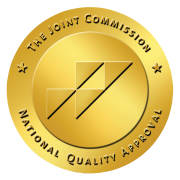What Types of Personality Disorders Are There?
A personality disorder is typically classified as long-term behavior that significantly differs from what is expected. Hmmm. Okay. This may or may not be helpful to you. It’s totally understandable to still be a bit in the dark about what a personality disorder actually is.
From day-to-day, each one of us may act “differently than expected.”
Do I have a personality disorder if I lied on my recent job interview?
I don’t really like most people around me; do I have a narcissistic disorder?
When are my behaviors easily explained as quirks and when do they slip into the realms of personality disorder?
To get a full answer to that question, a professional diagnosis is necessary. However, understanding what psychologists consider the range of personality disorders may help you gain an understanding of your (or a loved ones) behaviors. And help point you in the right direction.
10 Personality Disorders
According to the DSM 5, there are ten types of personality disorders. These disorders are categorized by clusters, with each cluster sharing somewhat similar symptoms and characteristics among its disorders.
However, the types of personality disorders will always have to do with how a person thinks about themselves (or others), how a person responds emotionally to stimuli, how a person relates to others, or how a person controls their behaviors.
Types of Personality Disorders
Below are the three categories of PDs with a very brief description of each.
Cluster A (Suspicious)
Personality disorders in this category feature unconventional behavior and include:
Schizotypal personality disorder –
A condition that fosters intense discomfort and a dislike for close relationships.
Paranoid personality disorder –
It causes a person to be overly suspicious and mistrustful of everyone around them.
Schizoid personality disorder –
Makes a person disinterested in creating and maintaining interpersonal relationships.
Cluster B (Emotional and Impulsive)
Characterized by symptoms full of drama and unpredictability, they include:
Borderline personality disorder –
BPD patients have a problem regulating their emotions and thus have low self-esteem, mood swings, and act on impulse.
Histrionic personality disorder –
Is accompanied by emotional instability and warped self-image. People with HPD crave approval from others and have attention-seeking behaviors.
Antisocial personality disorder –
ASPD patients don’t respect others and rebel against accepted norms and rules.
Narcissistic personality disorder –
People with this disorder think they’re better than everyone else and have no empathy for others. They have low self-esteem and lack self-confidence, which they mask by bringing others down.
Cluster C (Anxious)
People with these disorders typically experience frequent episodes of fear and anxiety. Disorders in this category include:
Dependent personality disorder –
people with this disorder are overly submissive and constantly need to be cared for by others. They often spend most of their time and effort trying to please others.
Obsessive-compulsive personality disorder –
The condition makes a person obsessed about order, perfection, and control.
Avoidant personality disorder –
Characterized by feelings of inadequacy, people with this condition crumble when they’re negatively judged. They’re averse to social interaction due to the fear of judgment.
How Do You Get Diagnosed for Personality Disorder?
Each disorder has their own criteria for diagnosis. Typically, individuals must have two or more presenting symptoms to warrant a diagnosis. Some people will behave in ways that are representative of multiple disorders. It is possible to have multiple disorders present, and that’s called a mixed personality disorder.
The important thing to remember is you cannot diagnose yourself. Neither can your parents or friends. Only a certified mental health specialist can do that. That means a psychiatrist or psychologist. It is not something anyone can simply label you. If you truly have a personality disorder, the best next step is to get help fully understanding and managing it.
Steps to Take If You Suspect You Have a Personality Disorder
The first course of action if you suspect you have a personality disorder, the first course of action is to visit a professional specializing in mental health disorders. Certain types of therapies have proven effective in helping people with all types of personality disorders. These may include:
- Dialectical Behavior Therapy (DBT)
- Cognitive Behavioral Therapy (CBT)
- Group therapy
- Acceptance and Commitment Therapy (ACT)
In addition to these formal treatments, keeping a healthy body and mind have been helpful for others. This may include learning about your personality disorder, exercising regularly, finding support groups in your area, staying connected to people who love you, and avoiding drugs or alcohol.
Of course, the first step is reaching out for help.
If you suspect you have a personality disorder and are looking for help, call Lido Wellness Center in Orange County, California, today for a consultation and to find out what treatments might be available for you.




